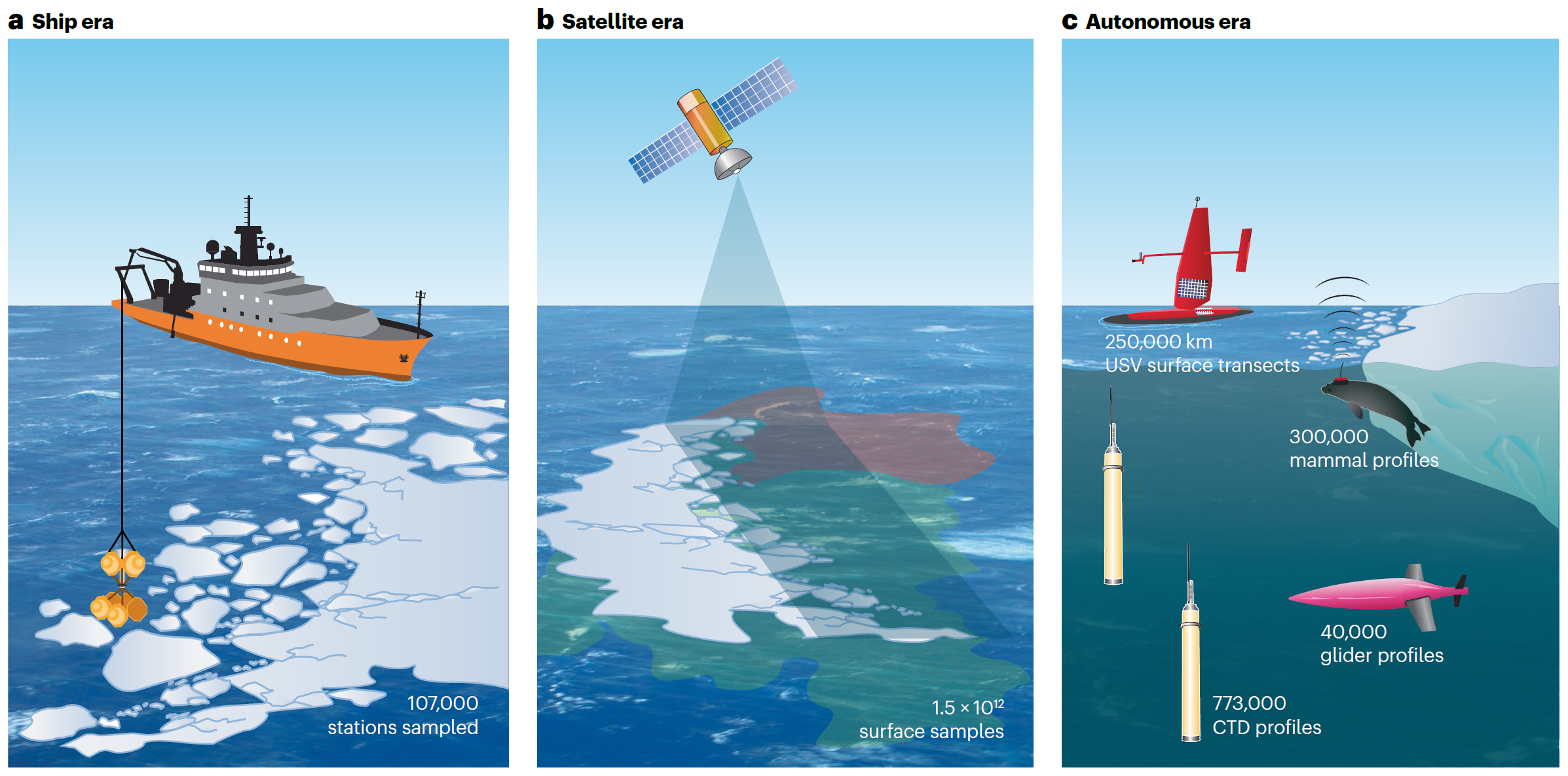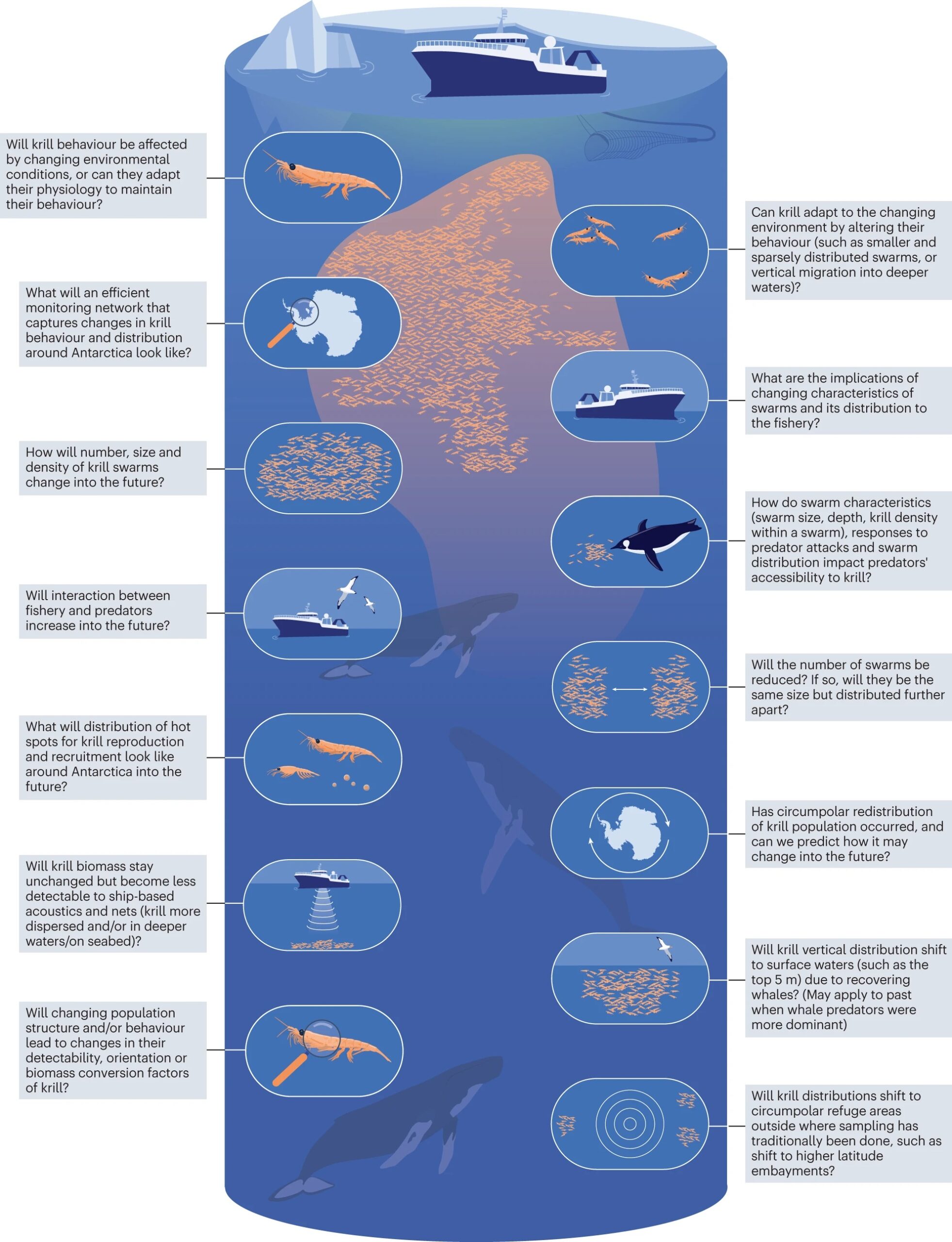Life in the Southern Ocean:
Cooling the planet while coping with climate change
12 April 2024
Two major reviews led by AAPP researchers about the future of Southern Ocean ecosystems in a changing world have been published in high-impact journal Nature Reviews Earth & Environment this year.
One, on the role of marine life in the Southern Ocean carbon cycle (pdf), was published today.
Lead author Philip Boyd, Professor of Marine Biogeochemistry at the Institute for Marine and Antarctic Studies, said the review highlights how the Southern Ocean contributes disproportionately more to the global carbon sink than other regions.
“Our review shows that biologically-produced particles in the Southern Ocean are responsible for storing around three gigatonnes of carbon a year in the deep ocean, which accounts for 20–30% of the global carbon export,” he said.
The review notes that this “is surprisingly large given that phytoplankton are iron-limited with low productivity in more than 80% of the Southern Ocean”.
To resolve such enigmas, the review proposes more observations in the Southern Ocean and using machine-learning techniques to assimilate ocean data collected across satellites and autonomous platforms, including robotic floats which provide high-resolution observations of the oceans’ interior down to two-kilometres depth.

Another review, about climate change impacts on Antarctic krill behaviour and population dynamics (pdf), was published in January.
Lead author Dr So Kawaguchi, krill ecologist at the Australian Antarctic Division, said that krill play a central role in energy flow from primary producers to apex predators in most of the Southern Ocean, and are important to the biological ‘pump’ that transfers carbon from surface waters to depth.
“The carbon biomass of Antarctic krill is 2.5% of the total animal carbon biomass on Earth, which is incredible for just one species”, said Dr Kawaguchi.
“The swarming behaviour of krill and their high total biomass of hundreds of millions of tonnes are key aspects of their ecology that make them the primary prey for seabirds, seals and whales.”
But the review notes that “although krill behaviour and swarming have been reviewed extensively in the past, they have not been examined in the context of climate change and its implications for the wider ecosystem and the fishery.”
The review proposes a number of key research questions needing answers, such as “how will number, size and density of krill swarms change into the future?”, and “will interaction between the krill fishery and predators increase into the future?”
“With uncertainties and knowledge gaps in the understanding of population dynamics and how krill will respond to the future environment, revision of the management strategy for the krill fishery must take every necessary step to maintain a precautionary approach”, the review said.
Leader of the Australian Antarctic Program Partnership, Prof Nathan Bindoff at the University of Tasmania, said that a key aim of AAPP research is to provide decision-makers with the knowledge needed to respond to climate change in this critical decade for action.
“In the fifth year of our ten-year program, it’s pleasing to see high-quality publications such as these delivering against key research questions in the AAPP’s projects on sea ice, krill and ecosystems,” he said.

THE REVIEWS:
Boyd, P.W., Arrigo, K.R., Ardyna, M. et al. The role of biota in the Southern Ocean carbon cycle. Nat Rev Earth Environ (2024).
Kawaguchi, S., Atkinson, A., Bahlburg, D. et al. Climate change impacts on Antarctic krill behaviour and population dynamics. Nat Rev Earth Environ 5, 43–58 (2024).



